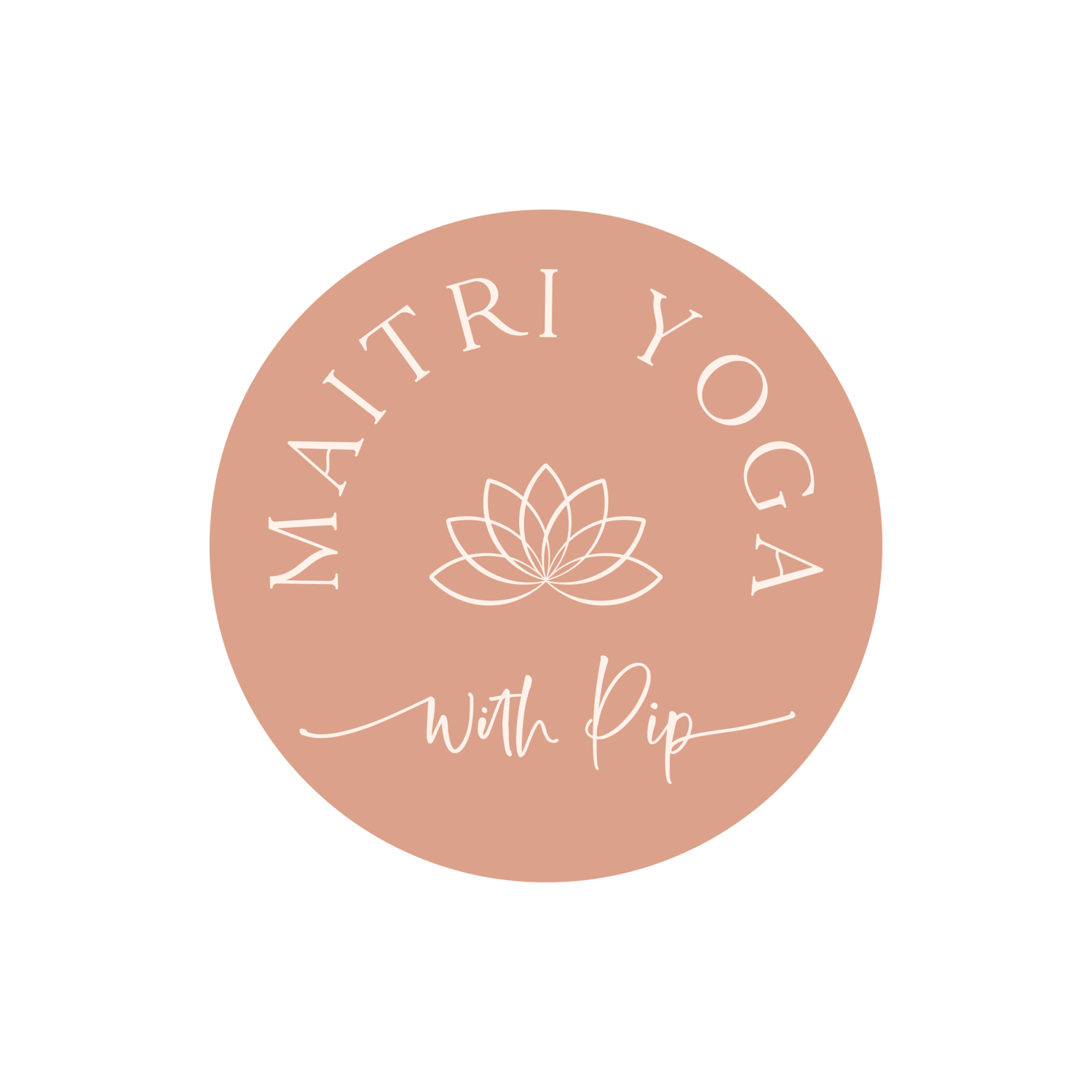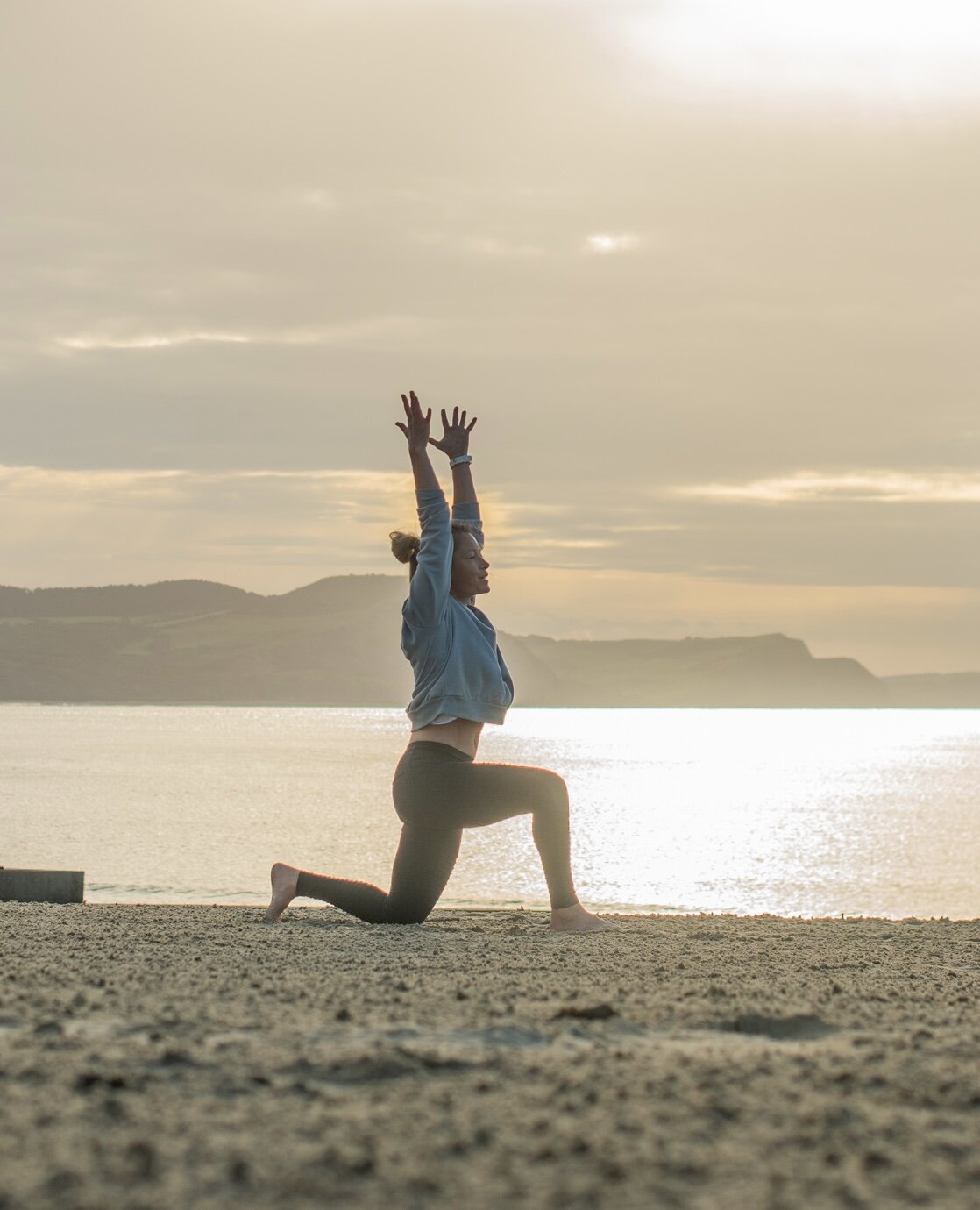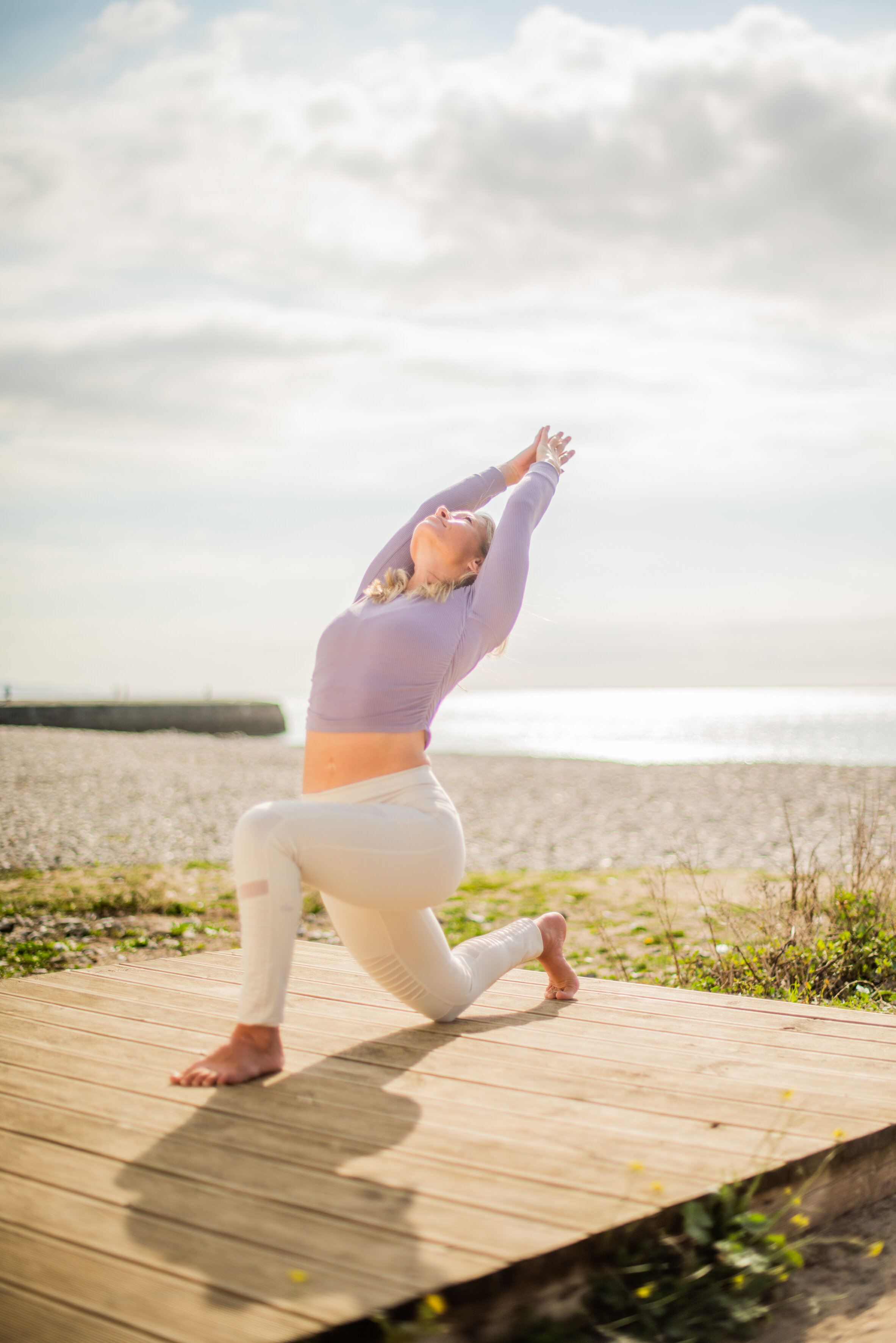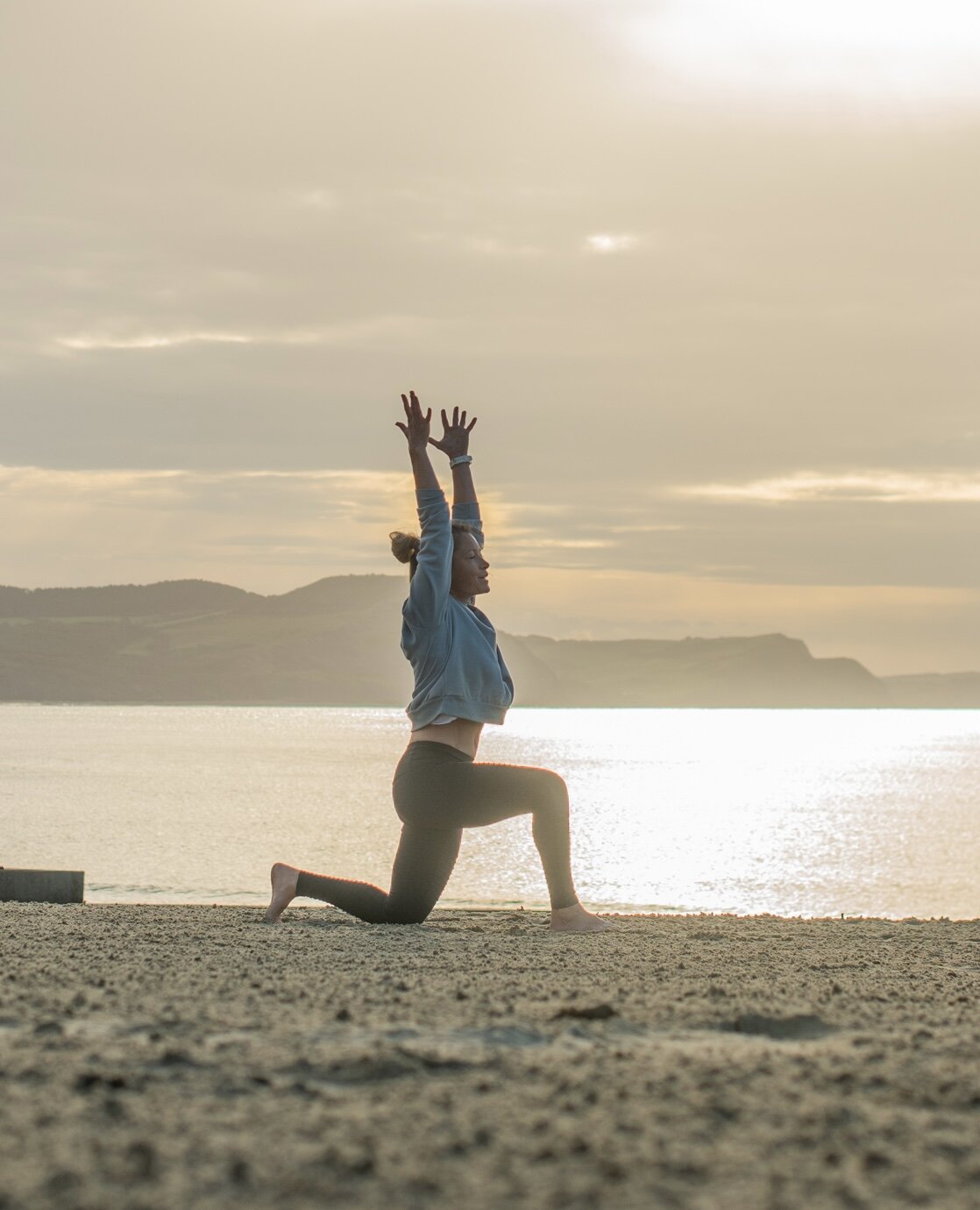Anjaneyasana (Low Lunge) technique
WHY I HAVE CHANGED MY TECHNIQUE APPROACH TO ANJANEYASANA (LOW LUNGE) IN TERMS OF AN INJURY MANAGEMENT PERSPECTIVE
In traditional anjaneyasana you sink your hips heavy and low and your spine curves backwards. In respect of the back leg - this puts a lot of tension & load on the front part of the hip socket structure & also can push the head of the thigh bone into the socket itself. This is not a mechanically desirable thing to do, especially when done as a default repetitive process. Traditional anjaneyasana can be used sparingly, for instance when using it as a base for pigeon pose 2.
In reformed anjaneyasana you produce a more balanced strength & length profile along the whole of the quads & hip flexors rather than a concentrated heavy load on the most vulnerable part, being the front part of the hip socket. By engaging the back of the hip muscles you also help to prevent the top of the thigh bone from being pushed into the hip socket.
To achieve this, the technique applied is more upright and focuses on co-contraction between the front and back components of the hip muscles and the spine is fixed rather than extending.
Experiment with both versions so you can experience the difference in your body.
Traditional anjaneyasana:
Place your left knee on the floor, right foot far in front and sink your hips heavy and low, arch your spine - notice where you feel the majority of the sensation.
Reformed anjaneyasana:
Place your left knee on the floor, aligning your left hip directly above it. Walk your right foot away, starting with your front shin vertical
Keep your back toes tucked under and create the action of kicking your back foot away whilst simultaneously creating the action of driving your back knee to the front of the mat
Lift up at your frontal hip points and draw your front ribs inwards
If you want to increase the intensity then walk your front foot slightly forward and deepen the lunge without loosing any of the above actions!
Notice where you feel the sensations now
Hopefully you will experience a more equanimous and integrated sensation along the whole of the front of the hips and quads rather than a concentrated sensation at the frontal hip socket.
Let me know how you get on in the comments below….





